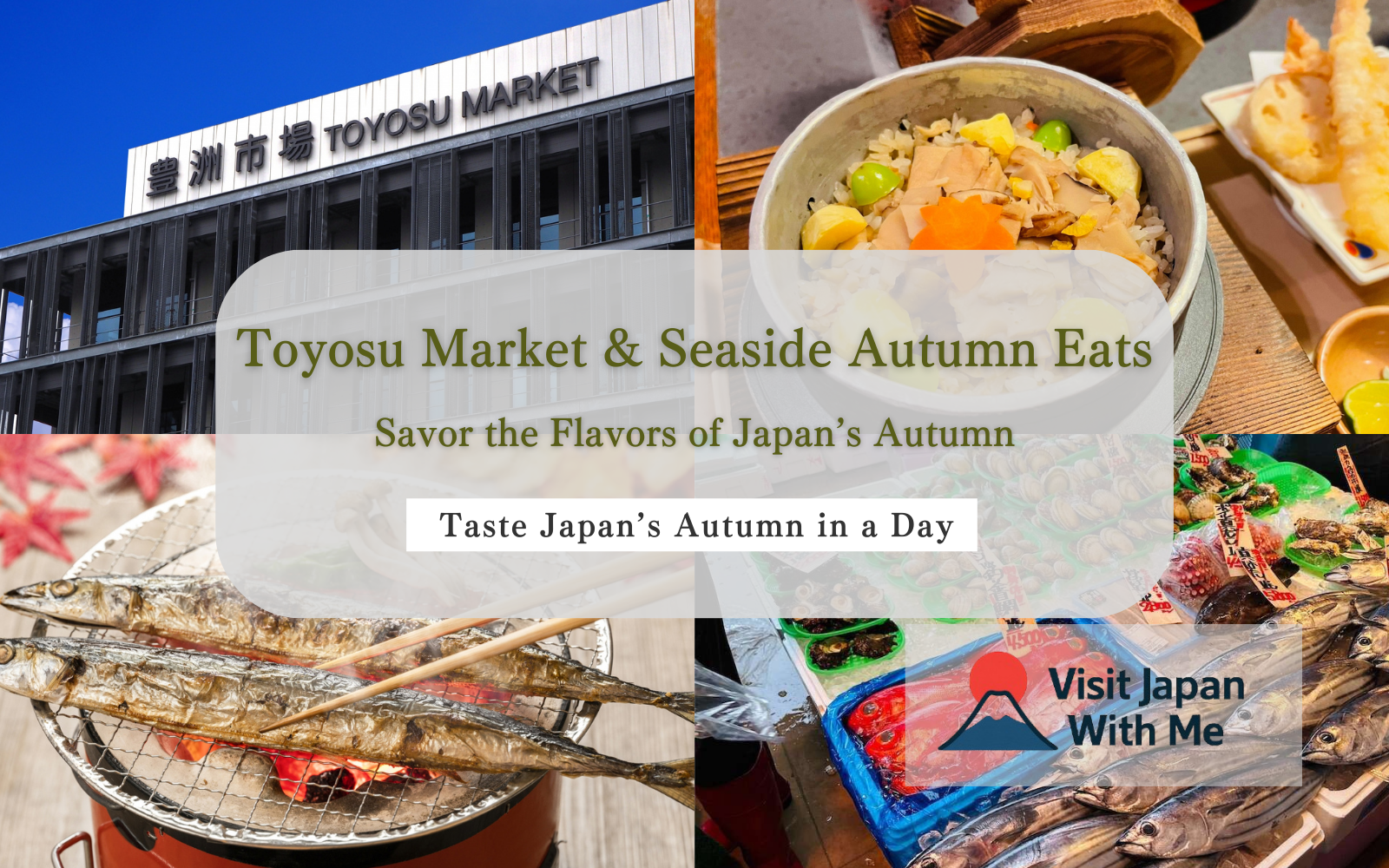What to Eat in Japan in Autumn: From Seasonal Treasures to a Perfect Day of Tasting
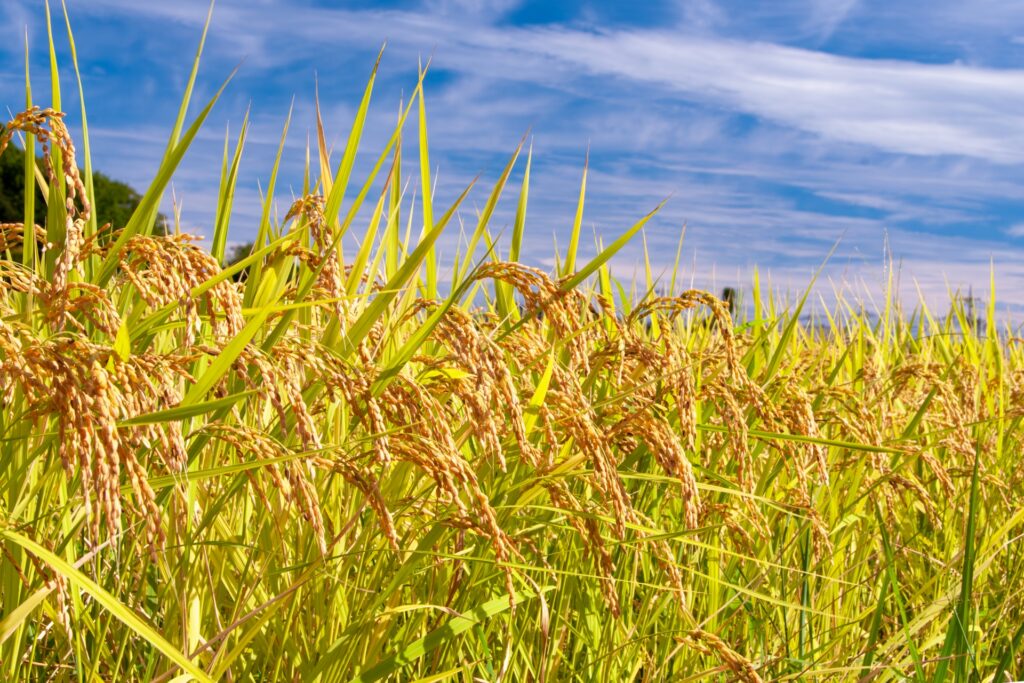
When autumn arrives in Japan, the air turns crisp, the skies clear, and the leaves shift into deep shades of red and gold. In markets, kitchens, and even convenience stores, the change of season is just as vivid — autumn is the season of appetite, or shokuyoku no aki (食欲の秋).
It’s also when rice paddies turn golden and heavy with grain, and farmers begin harvesting shinmai — freshly harvested rice with a gentle sweetness and aroma that makes even a simple bowl unforgettable.
In this guide, we’ll explore the key seasonal ingredients and dishes of autumn in Japan, and then show you two tasting routes: one set in Tokyo’s Toyosu Market, and another at coastal markets you can visit as a day trip from the city.
🍁 Seasonal Ingredients and Dishes You Can’t Miss in Autumn
🌾 From the Mountains and Fields
- Matsutake (松茸) and Other Mushrooms
Matsutake is the king of Japanese mushrooms, with a deep, woodsy fragrance that feels like stepping into a cedar forest after rain. Cooked in rice (matsutake gohan), the aroma rises in a fragrant cloud when you lift the lid.
But autumn isn’t only about matsutake — Japan has a rich variety of mushrooms like maitake (earthy, frilled, and umami-rich), shimeji (gentle nuttiness), enoki (soft crunch), and shiitake (deep savoriness). Whether grilled, simmered in soup, or added to a hot pot, each type has its own personality. - Root Vegetables
- Satoimo (里芋) – Taro-like potatoes with a creamy, slightly sticky texture, perfect in stews or hot pots.
- Renkon (蓮根) – Lotus root, crisp when stir-fried, tender when simmered, and beautiful with its natural holes.
- Kabocha (かぼちゃ) – Japanese pumpkin, sweet and velvety, ideal for tempura or simmered with soy sauce and sugar.
- Sweet Potato (Satsumaimo / さつまいも)
Often roasted over charcoal in autumn, the golden flesh is naturally sweet, almost like caramel custard without sugar. Vendors sell them hot from small trucks, calling “yaki-imo~” through the streets.
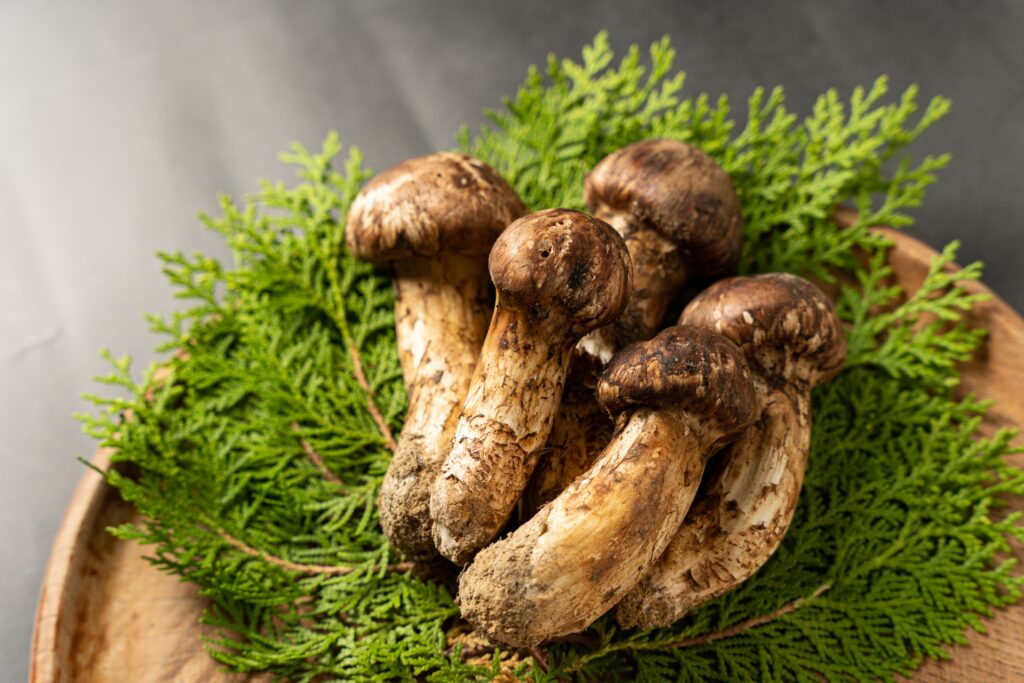
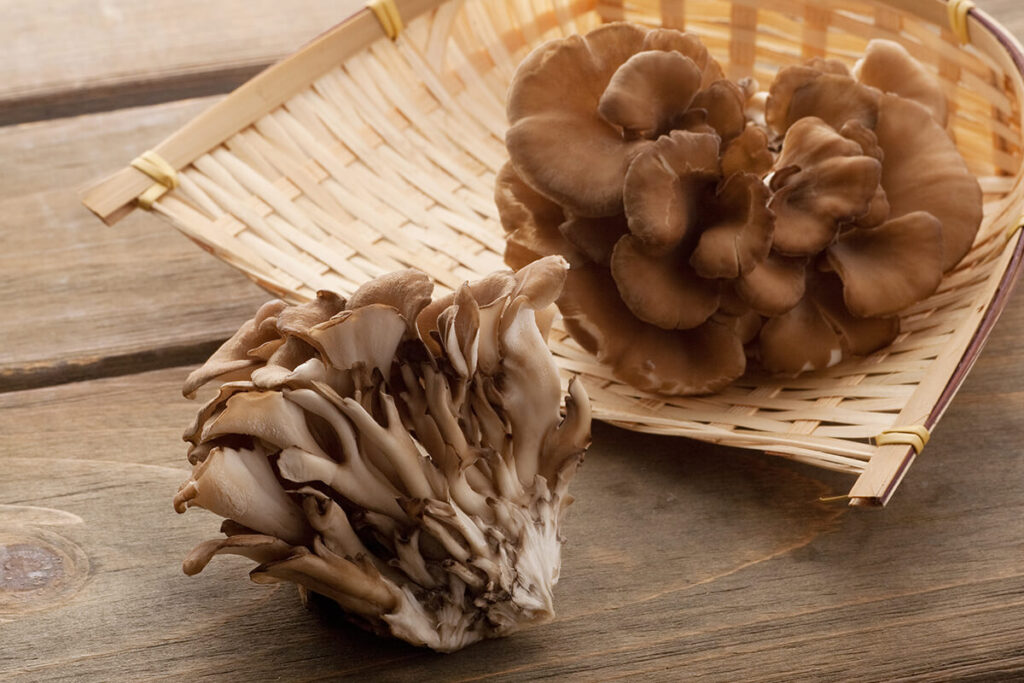
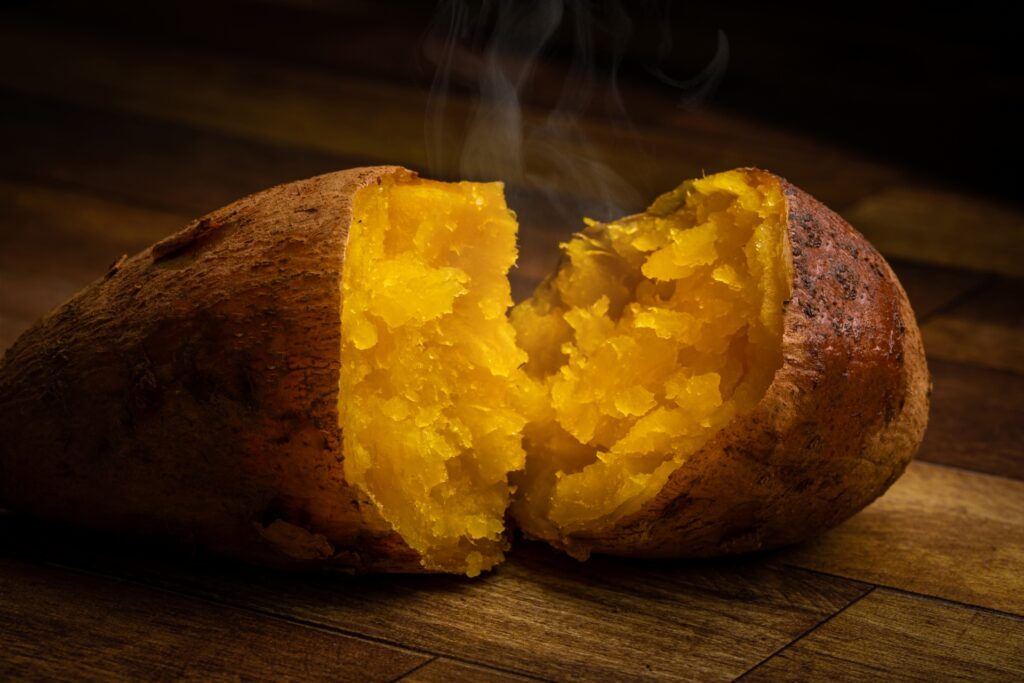
🐟 From the Rivers and Sea
- Sanma (秋刀魚) – Pacific saury, in peak condition in autumn, with shiny silver skin and rich, fatty meat. Best enjoyed grilled with salt, crispy skin, and a squeeze of citrus.
- Salmon & Ikura (鮭・いくら) – In northern Japan, autumn means salmon season. The flesh is firm and flavorful, and the roe (ikura) bursts with sweet briny juice over warm rice in a oyako-don (parent-and-child bowl).
💡 Local Tip: In Japan, salmon is generally referred to as sake or shake (鮭) in Japanese. That said, when people say “salmon” (サーモン) in everyday conversation, they often mean the raw fish used in sushi or sashimi. When they say “sake” or “shake” (鮭), they usually picture the grilled, salted version served with rice at breakfast. In reality, they’re close relatives in the fish world — but in Japanese dining culture, they live very different “lives” on the table. - Saba (鯖) – Mackerel in autumn is extra flavorful, enjoyed grilled, simmered, or cured as shime-saba.
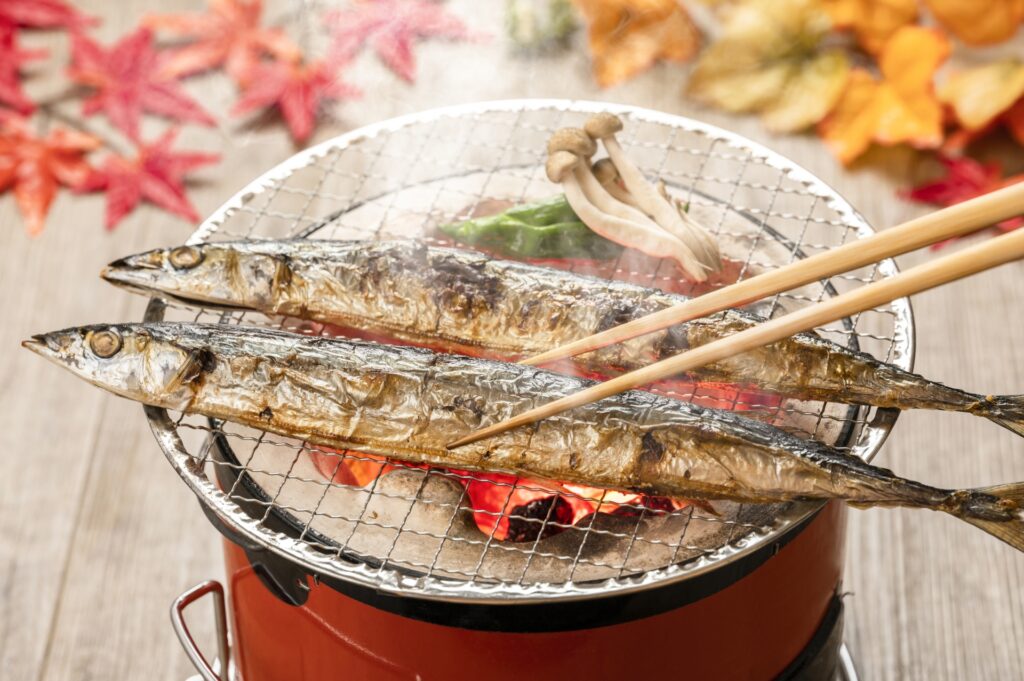
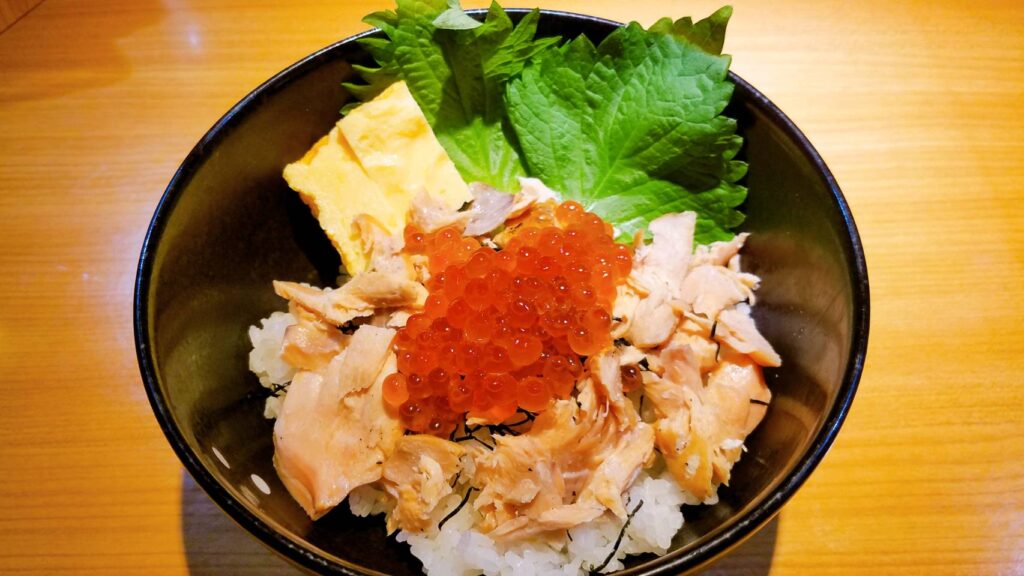
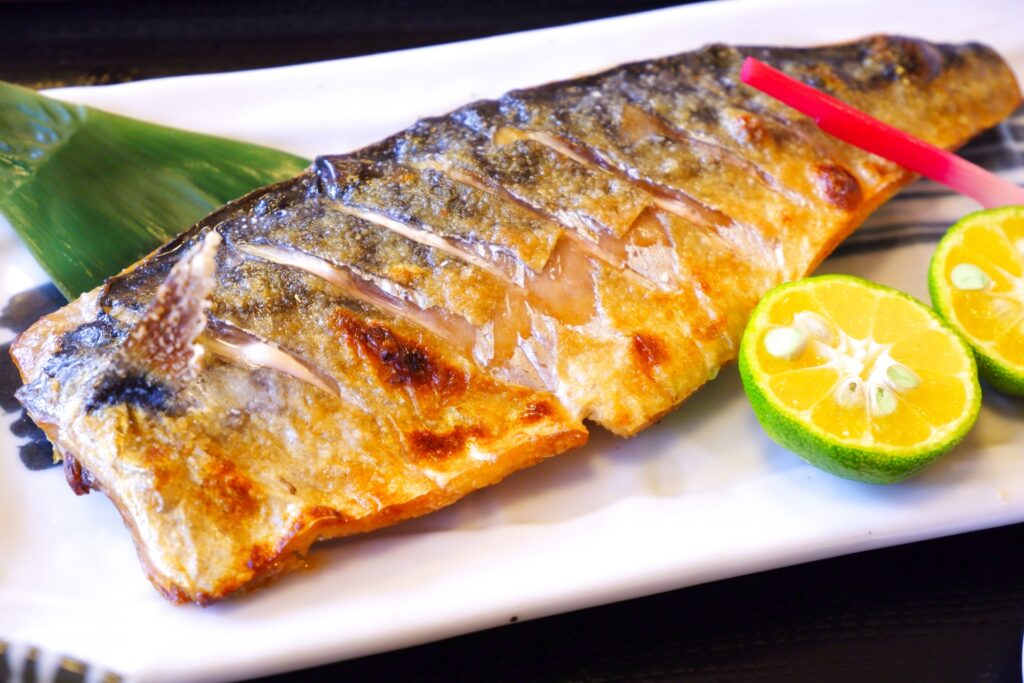
🍊 Fruits and Nuts
- Kaki (柿) – Persimmons come in sweet (amagaki) and astringent (shibugaki) varieties. Sweet ones are eaten fresh, while astringent ones are hung to dry into hoshigaki, with concentrated honey-like sweetness.
- Kuri (栗) – Japanese chestnuts are plump and mild in sweetness. They shine in rice dishes (kuri-gohan) or as chestnut paste in sweets like Mont Blanc.
- Ginnan (銀杏) – Ginkgo nuts, often skewered and lightly salted, are enjoyed roasted in autumn. They have a warm, nutty-bitter flavor and a soft, chewy texture. Be aware, the shells give off a very distinctive, pungent smell when fresh — but don’t let that stop you; once cooked, the aroma mellows and the taste is worth it.
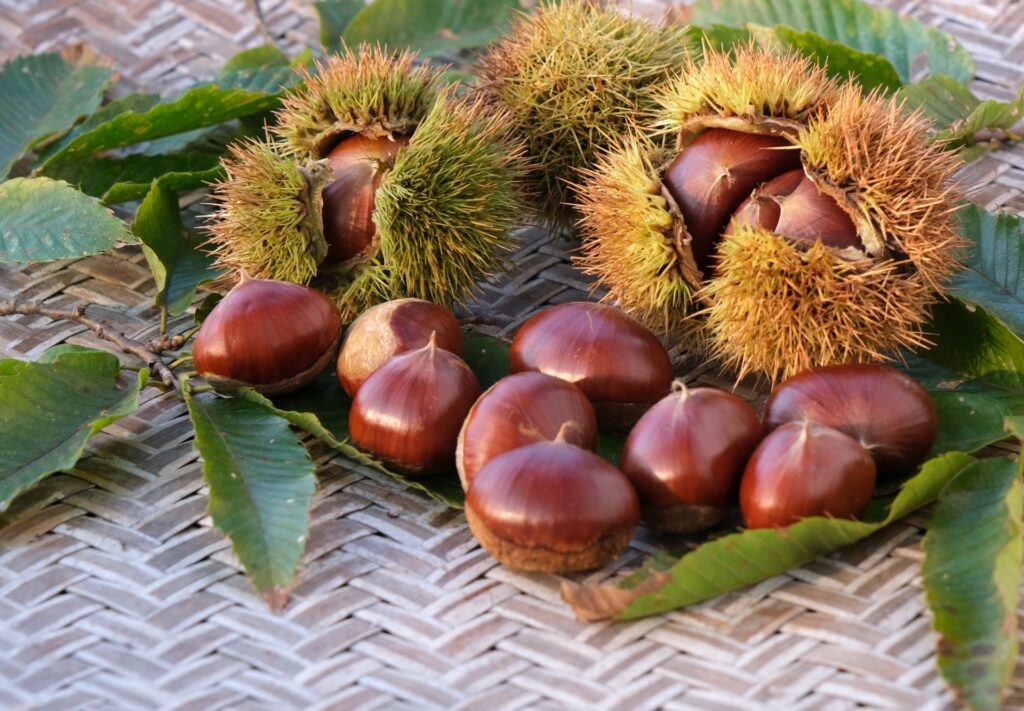
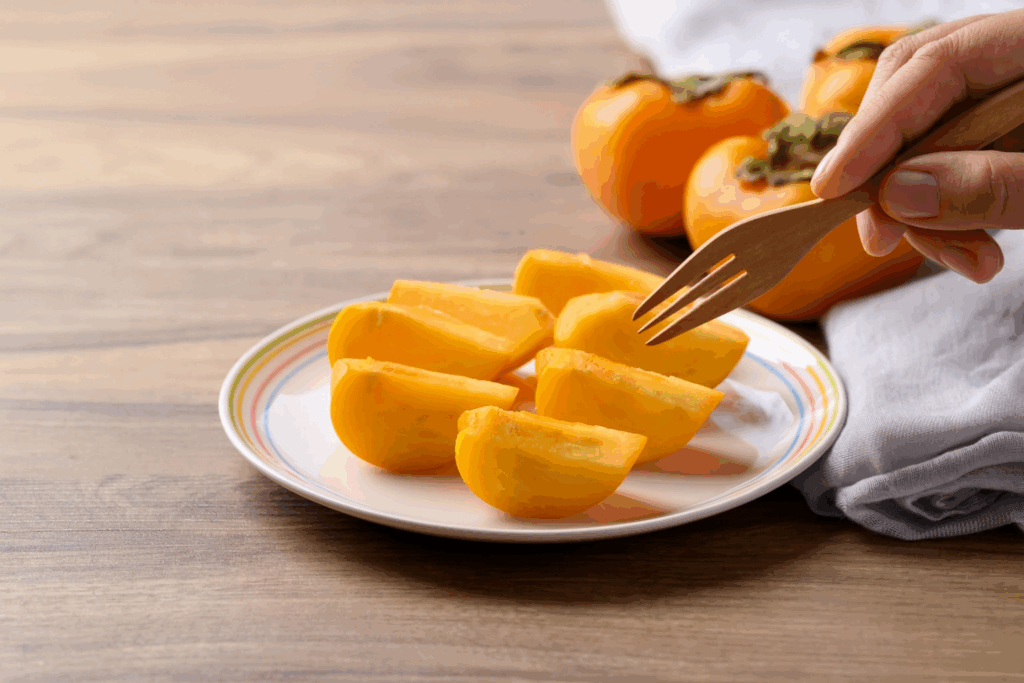
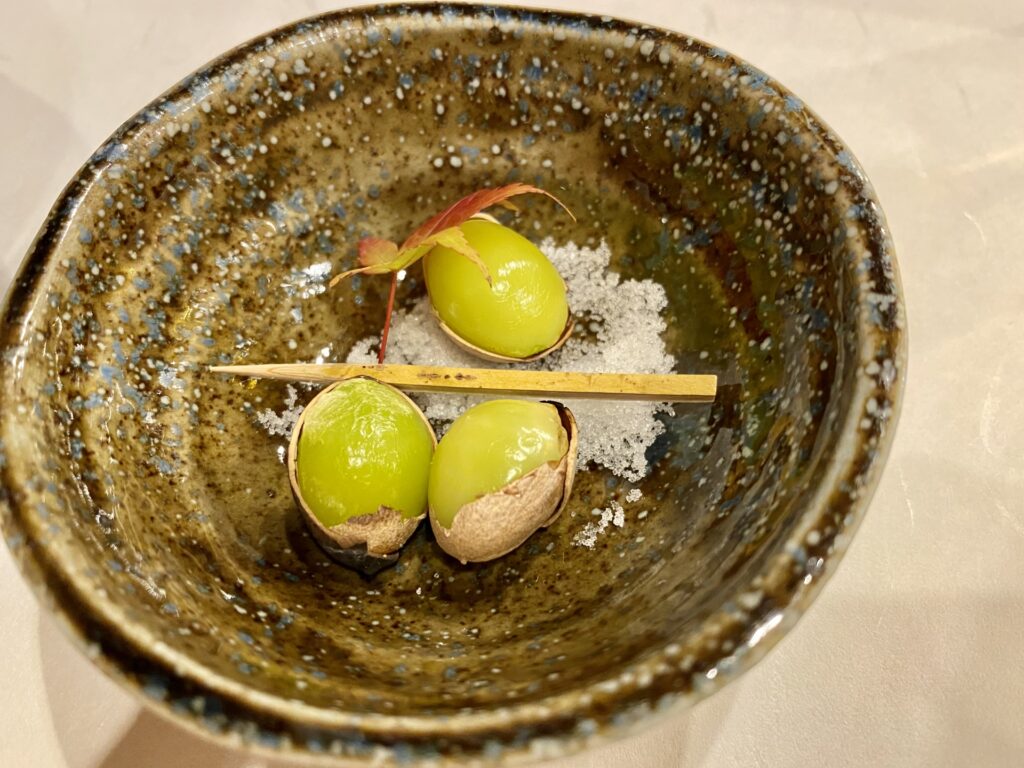
🍮 Autumn Desserts & Modern Twists
- Mont Blanc – A chestnut cream-topped cake adapted from French patisserie, airy yet rich.
- Imo Sweets – Sweet potato tarts, puddings, and even soft-serve ice cream.
- Convenience Store Specials – Limited-edition treats like pumpkin cheesecake, chestnut mochi, and sweet potato parfaits, available only for a few weeks each year.
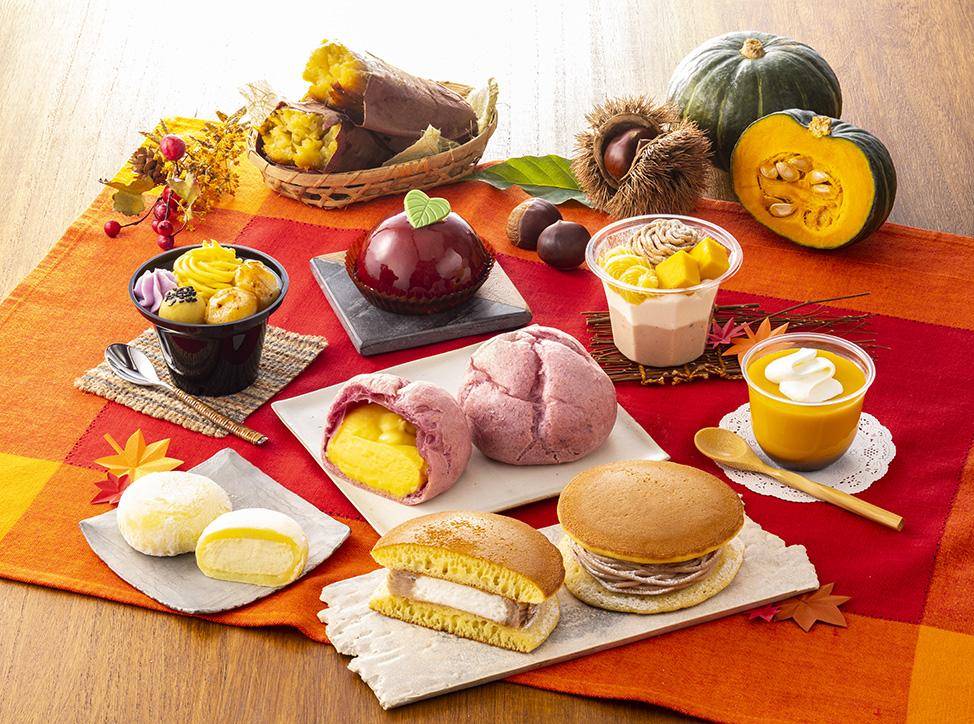
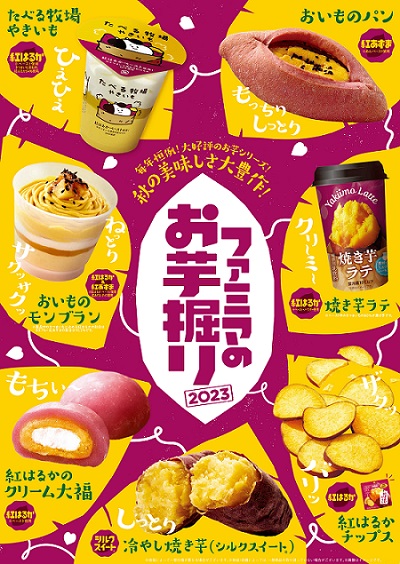
Autumn Flavors in One Day: Tasting Routes
If you only have a day to experience Japan’s autumn food culture, you can still enjoy a rich journey of seasonal flavors.
Here are two tasting routes you can follow — one set in Tokyo’s bustling Toyosu Market, the other in a coastal fishing port just a short trip from the city.
Both will take you from breakfast to dinner, showcasing the best the season has to offer, whether it comes from the mountains, fields, or the sea.
Route 1: Toyosu Market in Autumn
Morning – Market Energy
Arrive early at Toyosu Market’s public areas. Fishmongers display shiny sanma, whole salmon, and plump mackerel on ice. In the produce section, you see bright orange persimmons, kabocha pumpkins, and sacks of freshly harvested new rice.
For breakfast, choose a sanma teishoku — the sizzling fish served with miso soup, rice, and pickles. The skin crackles, the inside is tender, and the daikon oroshi cuts through the richness.
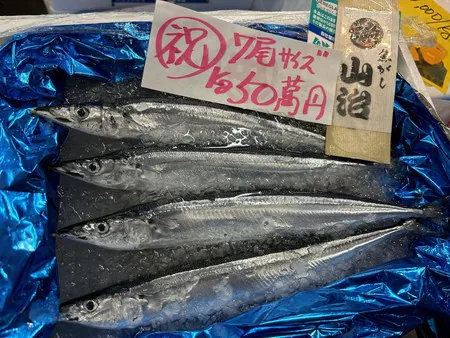
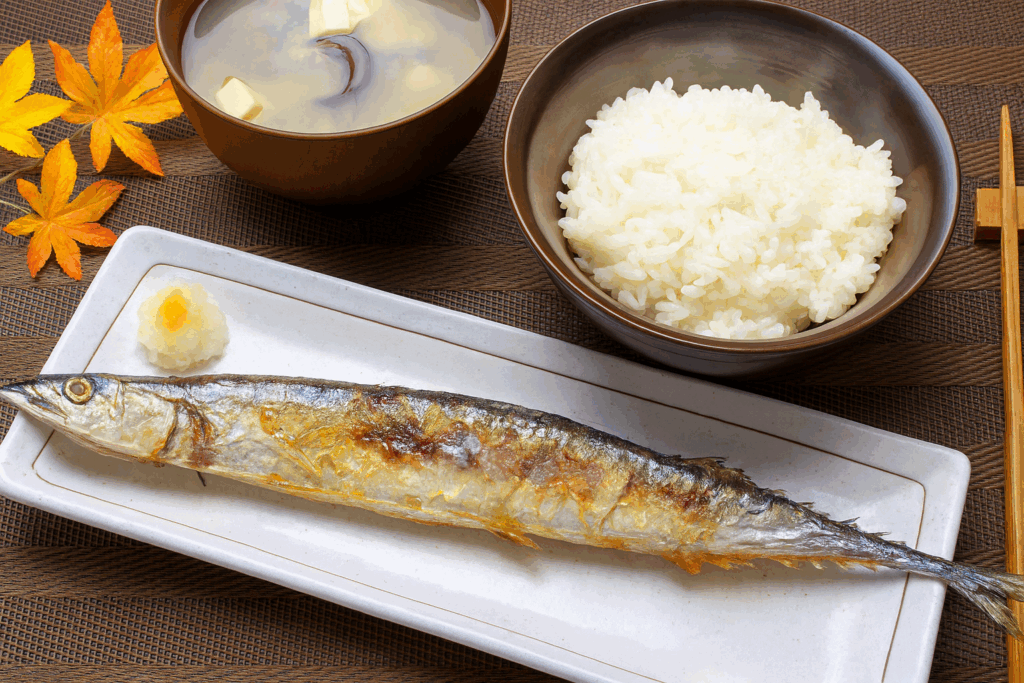
Lunch – Mountains in the City
At a nearby Tsukiji restaurant, order matsutake gohan and tempura made with pumpkin, maitake, and lotus root. The tempura batter is light and crisp, letting each vegetable’s flavor shine.
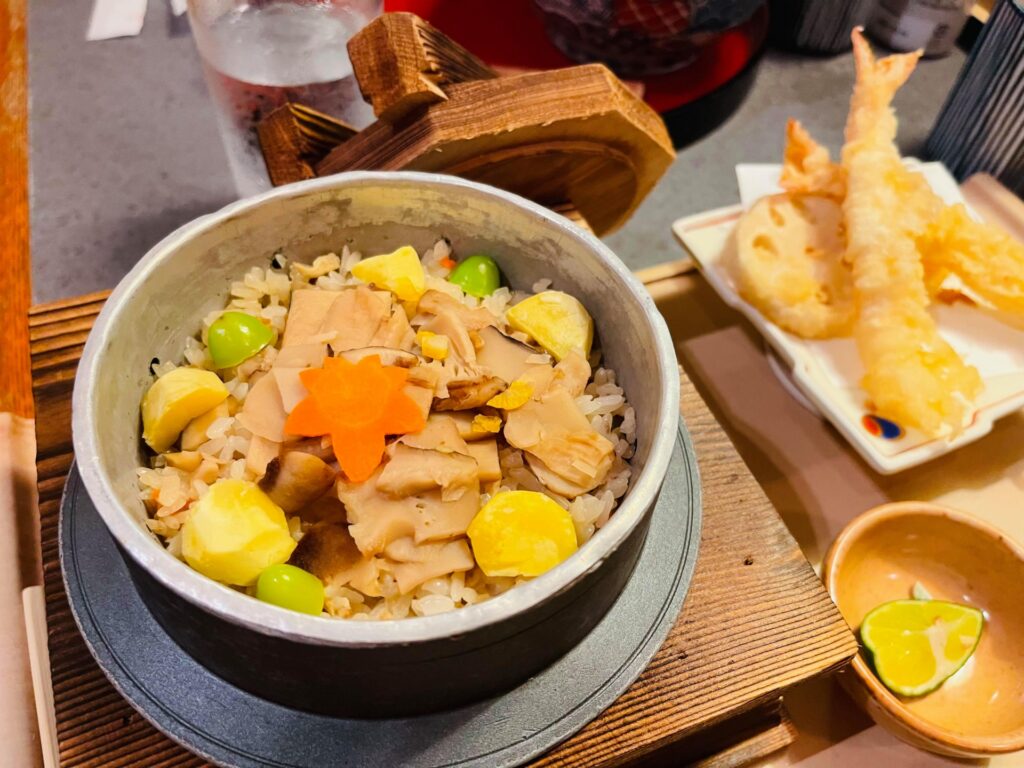
Afternoon – Urban Sushi Stop
Head to a sushi bar for a salmon and ikura donburi. The roe pops gently with each bite, releasing sweet brine over the warm rice.
Evening – Comfort in a Pot
Finish your day with a nabe hot pot at a cozy izakaya. Mushrooms, salmon, tofu, and greens bubble together, the steam carrying an irresistible aroma. On the way back, grab a convenience store Mont Blanc or pumpkin cheesecake for dessert.
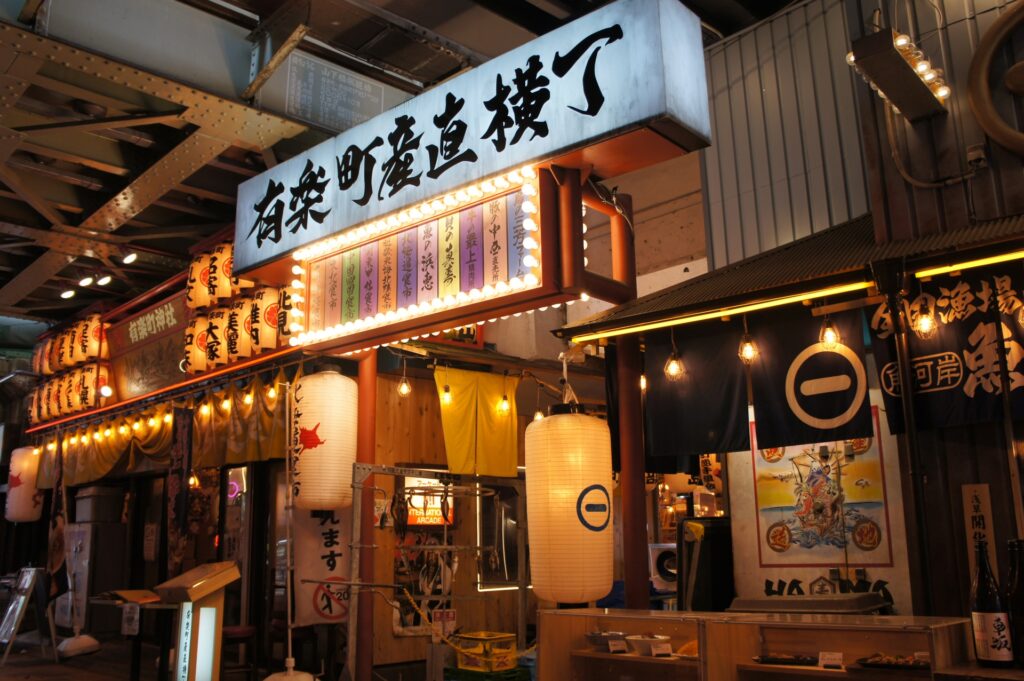
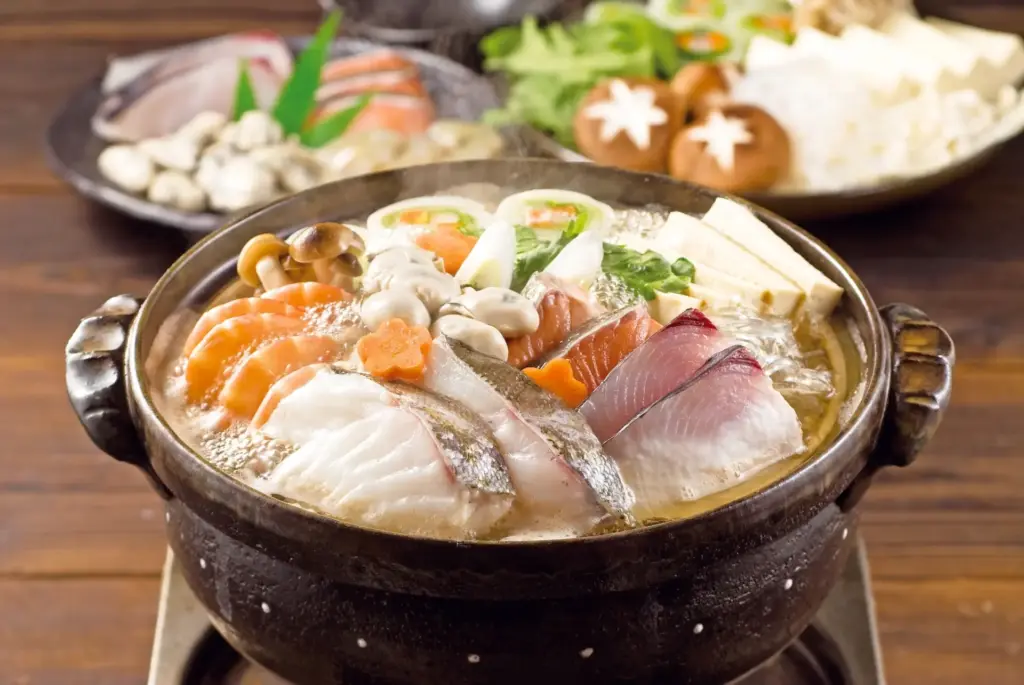
Access to Toyosu Market
- Location: 6 Chome-6-1 Toyosu, Koto City, Tokyo
- Nearest Station: Shijo-mae Station (Yurikamome Line), directly connected to the market
- Fastest Access from Shimbashi: Take the BRT (Bus Rapid Transit) bound for Harumi/Fukutoshin or Kachidoki, get off at Toyosu Market stop. About 15 minutes, no transfers. The ride runs along Tokyo’s bayside, so if you want to enjoy the waterfront scenery on the way, this is the fastest and most comfortable option.
- From Tokyo Station: JR Yamanote Line to Shimbashi (4 min) → BRT to Toyosu Market (15 min)
- Best Time to Visit: Arrive before 9:00 for the freshest seafood and produce
Route 2: Coastal Market Day Trips from Tokyo
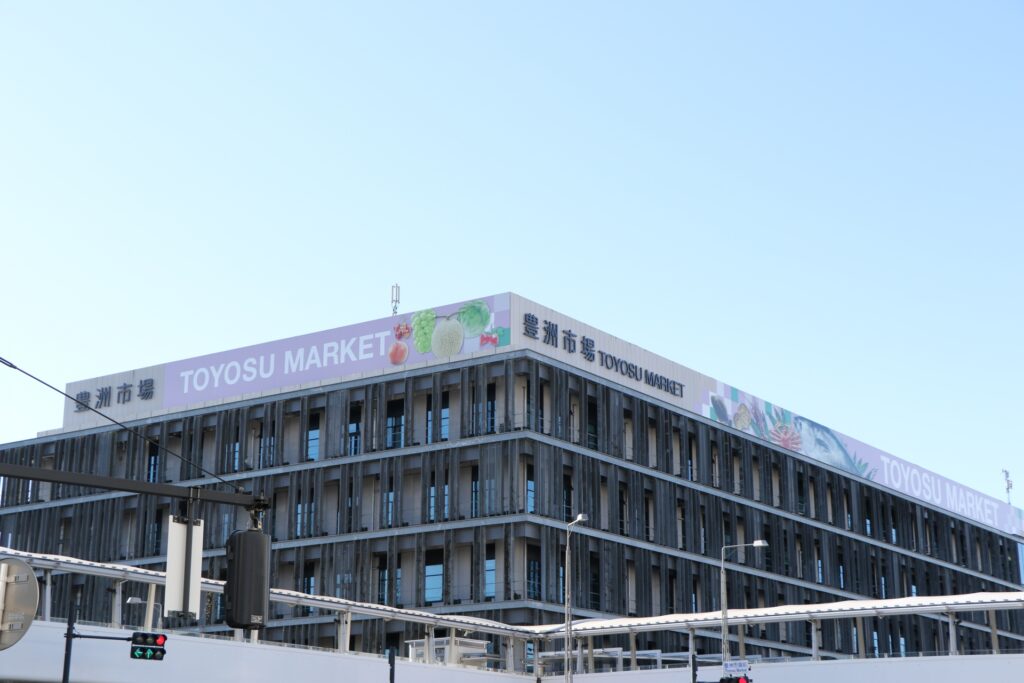
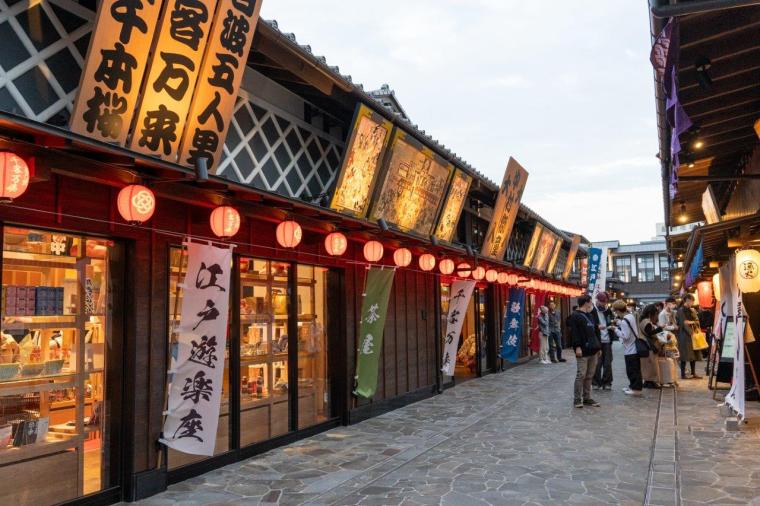
If you have a full day and want the flavor of the sea with a more local atmosphere, visit a nearby fishing port. You’ll find the same autumn fish as in Tokyo’s markets, but often just hours out of the water — and served in the very town where it was landed.
Misaki Port (Kanagawa) –
- Charm: Famous for its tuna auctions, but autumn also brings fatty sanma, rich saba, and seasonal vegetables from nearby fields. The port has a relaxed, small-town feel with ocean views.
- Where to Eat: Many restaurants around the market serve tuna sashimi platters, grilled sanma, and seasonal donburi. Some even prepare the fish you buy at the market.
- Best Time to Visit: Morning is best — arrive before 10:00 to see the market at its liveliest and secure a table at the more popular eateries.
- Access: About 90 minutes from central Tokyo by train and bus.
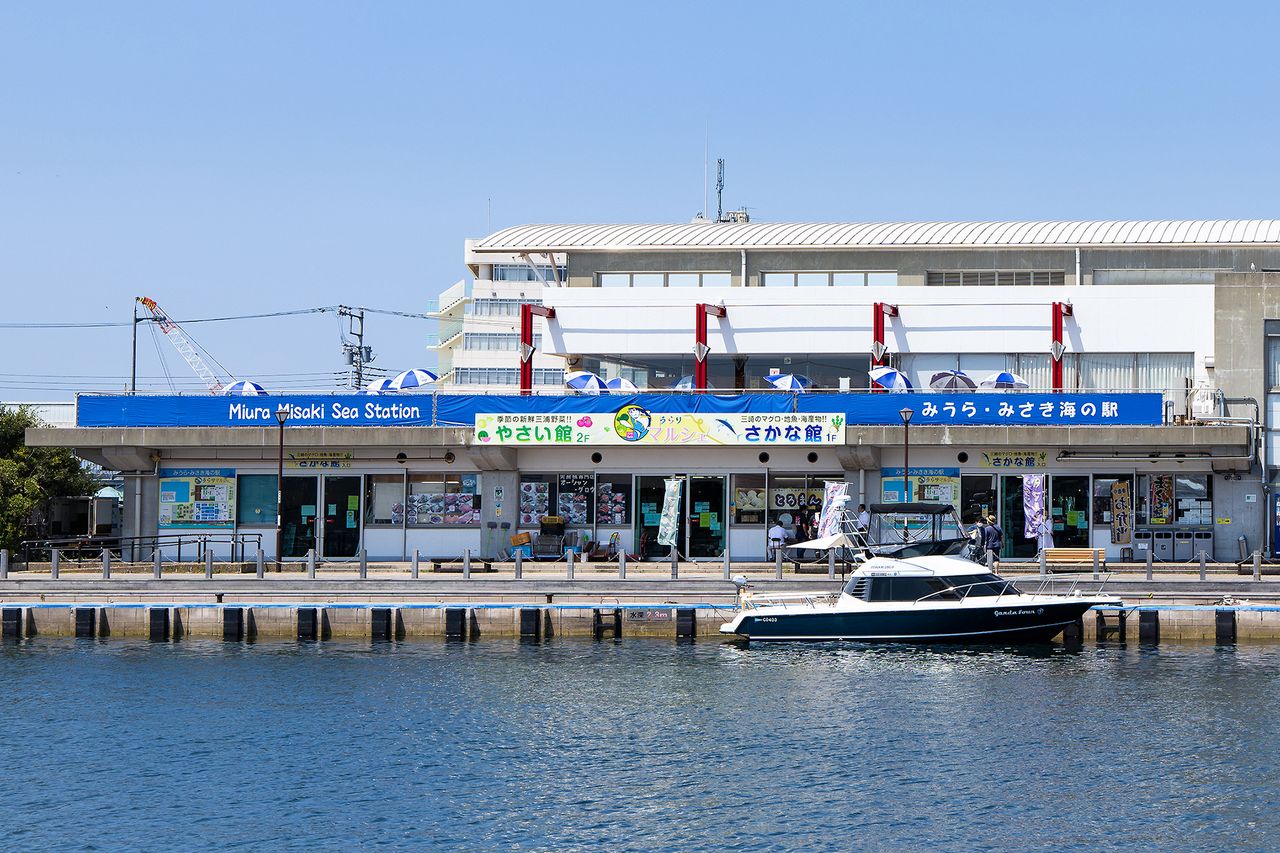
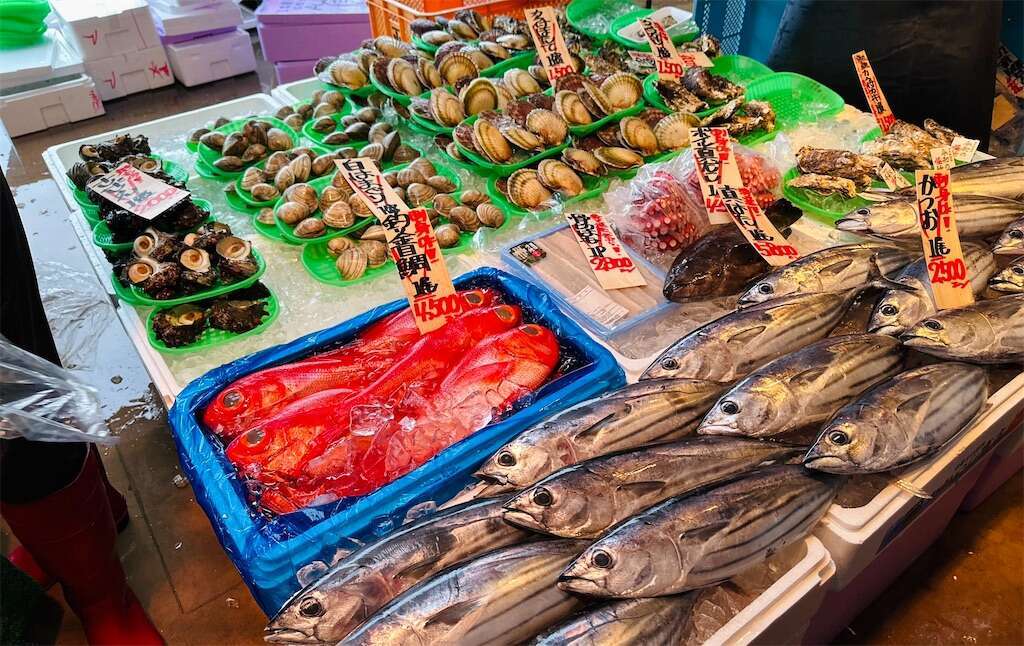
Katsuura Port (Chiba) –
- Charm: Known for its energetic morning market, where locals greet visitors warmly. In autumn, look for fresh sanma, mackerel, and lobster. The market street is lined with small food stalls selling grilled seafood skewers.
- Where to Eat: The market area has casual seafood diners and cafés serving “kaisendon” (raw seafood rice bowls) loaded with the day’s catch.
- Best Time to Visit: 6:00–9:00 is peak time, with the most variety on display. After 10:00, some stalls close.
- Access: About 2 hours from Tokyo by train.

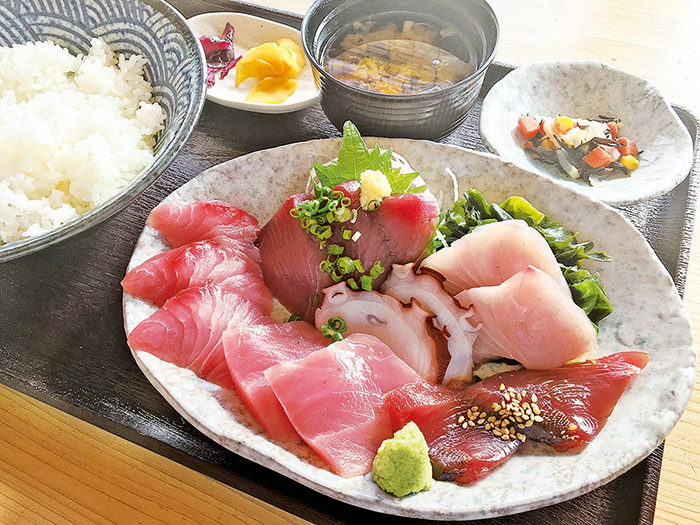
Ito Port (Shizuoka) –
- Charm: A charming onsen town with a weekend morning market right by the water. It’s especially famous for kinmedai (golden eye snapper), prized for its tender, fatty flesh. In autumn, you’ll also find local white fish and shellfish.
- Where to Eat: Many restaurants around the port serve kinmedai in various styles — simmered in soy-based sauce (nitsuke), grilled with salt, or even as sashimi. Seasonal donburi and teishoku sets often feature this local specialty.
- Best Time to Visit: 8:00–11:00, then enjoy the hot spring foot baths in town before lunch.
- Access: About 2 hours from Tokyo by Limited Express “Odoriko.”

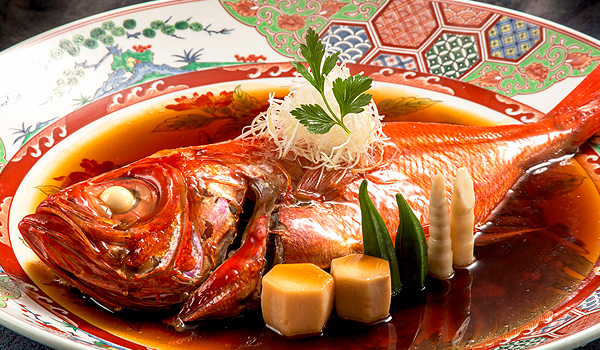
💡 Local Tip: At fishing ports, ordering the “today’s catch” (honjitsu no osusume) often brings you the freshest and most surprising dishes — sometimes even varieties you’ve never seen before.

